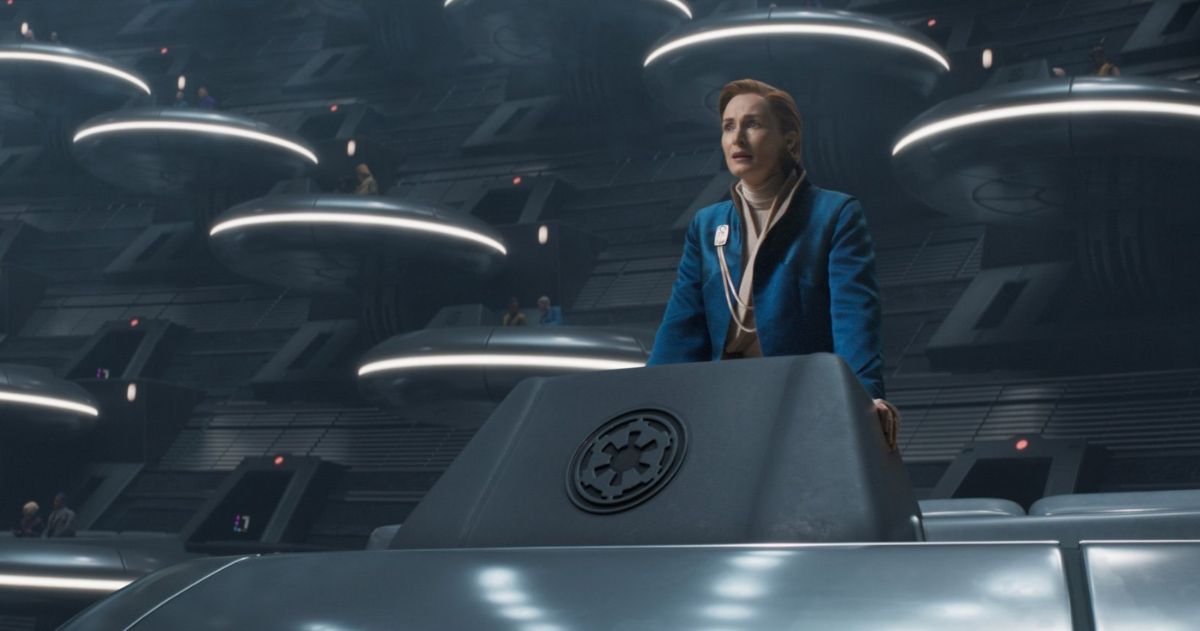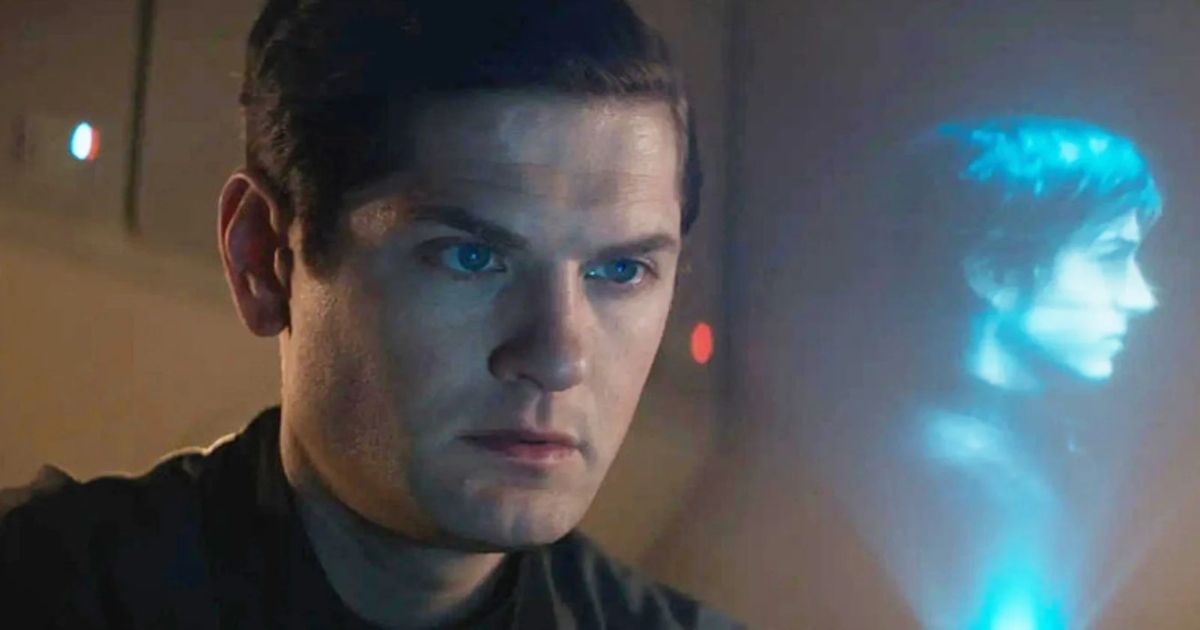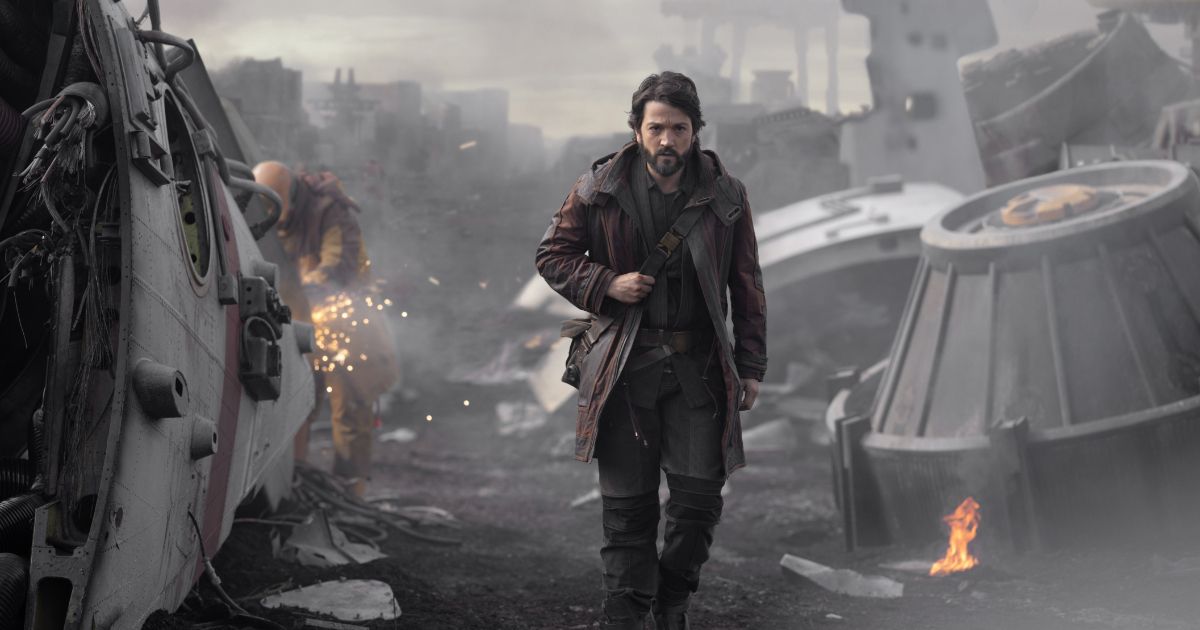Disney’s ownership of the Star Wars franchise keeps expanding in new directions. Star Wars: Rogue One was a pivotal point under the Mouse’s domain. Not only did it introduce us to Cassian Andor (masterfully interpreted by Diego Luna), an outsider who learned to despise the Empire, but it also gave us a look at the complex beginnings of the rebellion. Characters like Saw Guerrera or Galen Erso proved that, initially, there was not a condensed movement but mostly multiple groups that shared a common enemy but couldn’t agree on the method of fighting against it.
Andor, Disney’s latest entry in the Star Wars universe, picked up Luna’s character’s past to show a different side of the story. Whereas the show builds on Cassian’s origins and how he became a rebel, a brilliant perspective comes to life by exposing the sources of the Empire’s dominion. So far, it was clear that the imperial reign had a strong military basis, as any Empire would do. However, Andor goes to show that you can’t convey authority through weapons alone, but you also need strong cultural control over the governed to succeed. This power appears in multiple and fascinating ways throughout the show.
The Empire’s Glory
Soft Power is a concept derived from social sciences and diplomacy. In short, we could define it as achieving influence with persuasion and positive obedience. With the original Star Wars trilogy, we got a glimpse of the Empire’s most traditional power: Darth Vader’s reign of terror. The second trilogy (I, II, and III) gave us the conditions that led to the imperial era with the marvelous quote from senator Padme: “So this is how liberty dies...with thunderous applause.” For viewers, it was obvious that this was the start of a darker moment for the Star Wars universe.
Yet, despite the surface of a rebel alliance, it is safe to assume that many adhered to the new regime out of loyalty, reluctance, or fear. Another great insight came from Obi-Wan Kenobi’s episode 3, in that brilliant scene that shows the Jedi and Leia being rescued by Freck, a farmer that supports the Empire with its green flag. The signs were clear: the Empire had won the cultural battle.
Andor took the concept one step further and exhibited the grinds behind this power, especially within the Empire’s lines. Syril Karn, the deputy inspector in disgrace (portrayed by Kyle Soller), is the perfect example of how the Empire’s dominion impacts individuals. A lot of the character’s personality adds to the mix: his need for acceptance and desire to ascend make him the subject of the Empire’s cultural agenda. They need to feed certain recruits, employees, and other non-wealthy or non-elite members of society with the promise of power. Syril’s character and his mother (the first archetypical Jewish mother character in Star Wars?) prove that the Empire does not only work with terror but on social mobility as well.
Bureaucracy also plays a big part in this dominion. The universe is vast, neverending, and ungovernable. Imperial conversations, particularly those happening in the BSI (Star Wars' response to the CIA), revolve around categorizing each of the galaxy’s corners, calling which officer is in charge of what, and constant background checks, implying how much information they have on people. To know is to dominate, and the Empire understands the concept, bending its own rules when necessary to ensure its supremacy.
Soft Power’s Blind Spot
When bureaucracy and ungovernability collide, the Empire shows its weak spot. As mentioned, imperial dominion relies heavily on its cultural impact. A conversation in one of Mon Mothma’s (Genevieve O'Reilly) special soirees in Episode 8 is quite revealing: her interlocutor suggests that the Empire’s biggest asset is offering protection. Safety and order against an unknown threat work like a charm in Imperial dominion. They protect the elites from the threats of inhospitable territories such as Kenari, Tatooine, Jakku, or most of the planets in the franchise, for that matter.
Each settler of these forsaken lands lives as an outsider, relegated to slavery, or living for the day and accustomed to the Empire’s terror. Cassian is the perfect example of this, someone who cannot aspire to ascend in the Empire lines, even if he wanted to. The series constantly shows the protagonist escaping from the Empire with his wits and ability to go unnoticed through life. He does not fear Imperial power, as the Empire doesn’t care for him until he becomes a nuance.
The contrast is clear when Kino Loy (Andy Serkis), the prison’s floor manager, threatens him to be quiet because the Empire is listening, something Cassian knows is not true. Soft Power is there to fill the gaps of real power, that is, every blind spot they have. Conscripts, prisoners, and citizens must fear punishment, whereas elites and aspiring officers believe in the Empire’s order and promise of a better future.
Soft power breaks on these blind spots, a constant in the Star Wars franchise. Whether it is sabotaging the death star’s structure in its blueprints or stealing imperial credits in a heist, writers make a point of showing that there are two sides to the Empire’s dominion. Military power is and always will be the Emperor’s backbone, but Andor sheds light on the cultural aspect of this era. The series is a refreshing coming-of-age moment for the franchise, driving away from the problems of the Skywalker family that affect the entire galaxy to a more mature story-telling of the universe surrounding the Jedis and Rebels.
The politics behind Star Wars have always been complex and fascinating, but Andor pushed it to the next level by showing the softer side of the Empire’s power. We can only hope for more of these stories from a galaxy far, far away.



